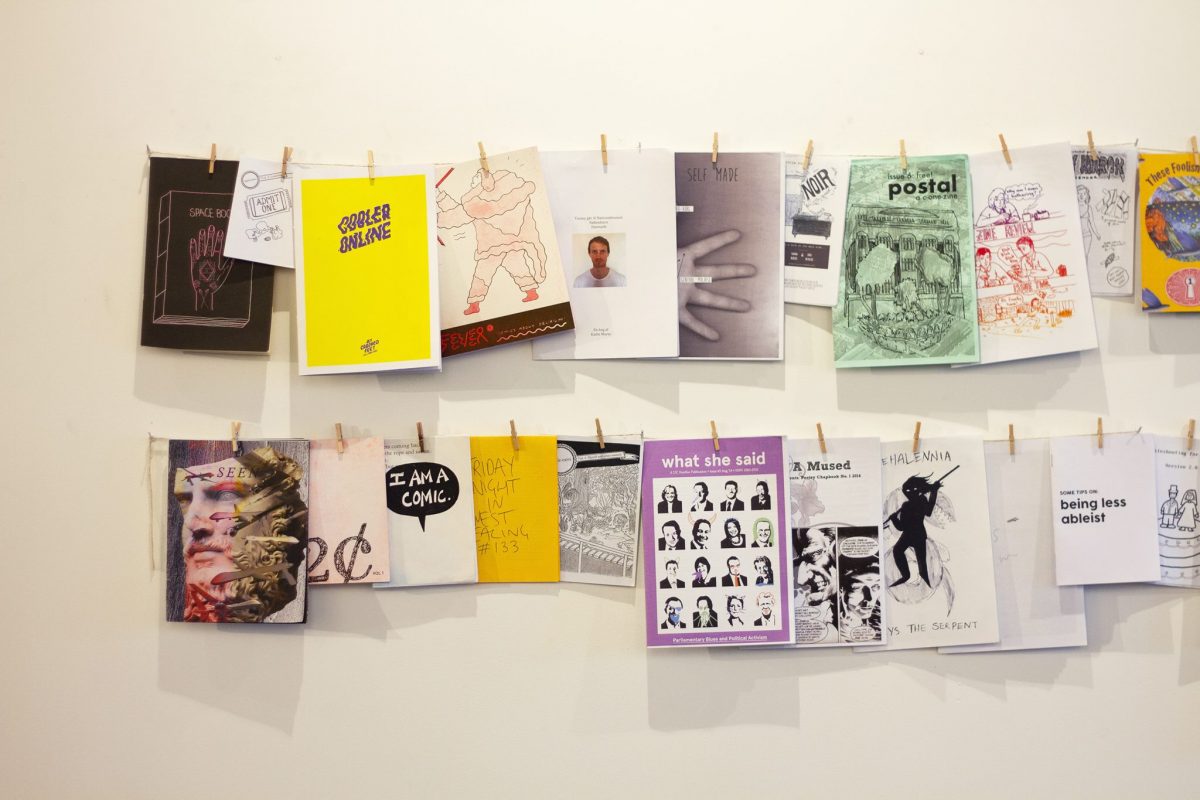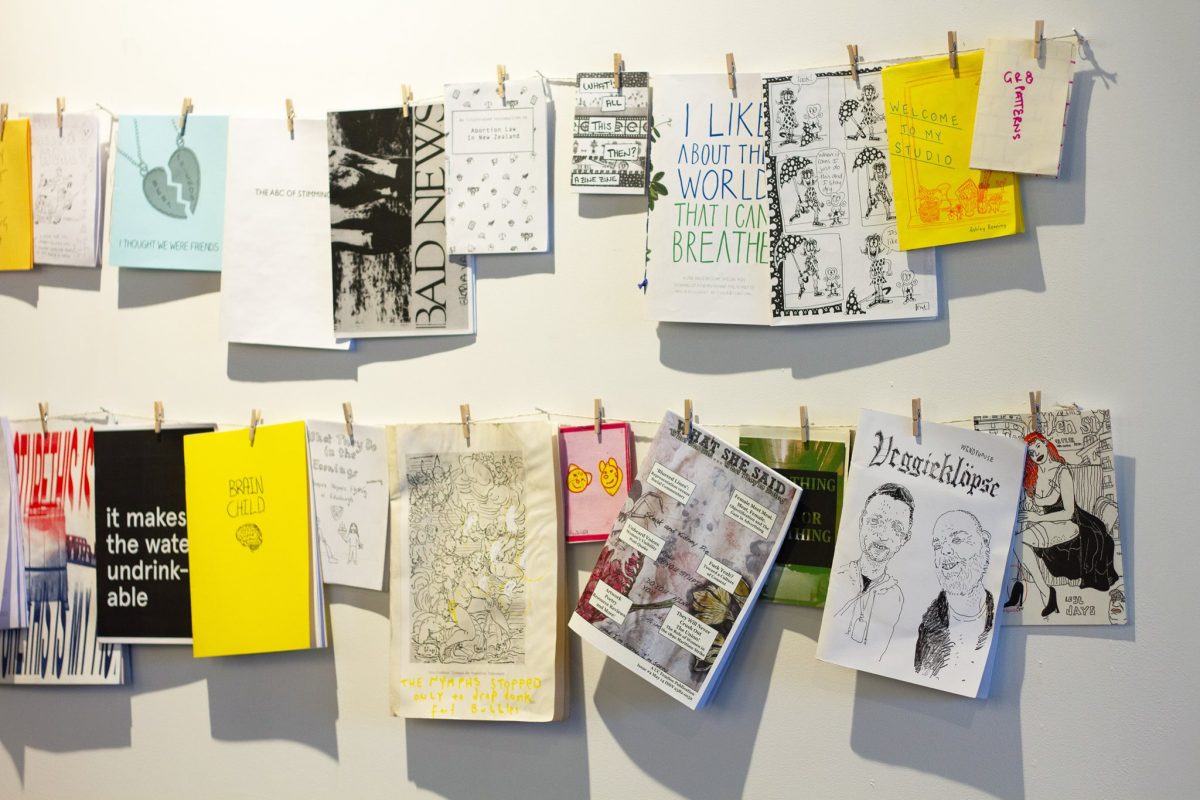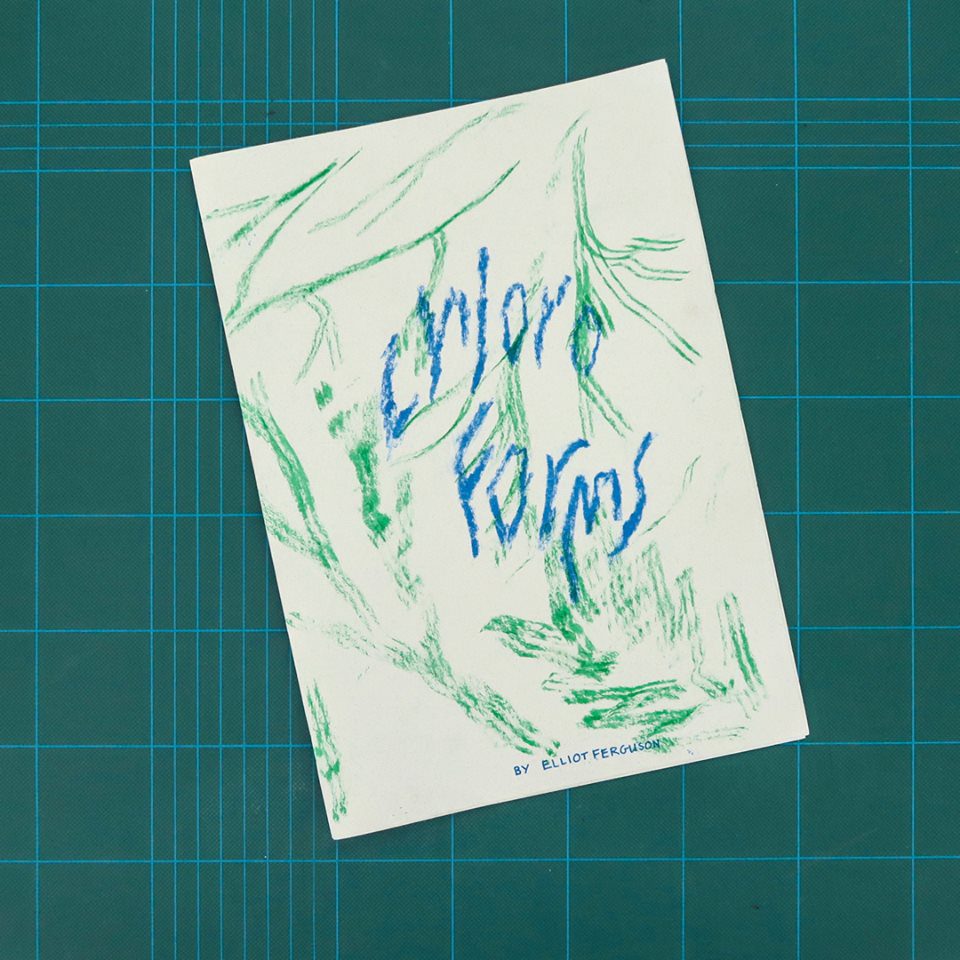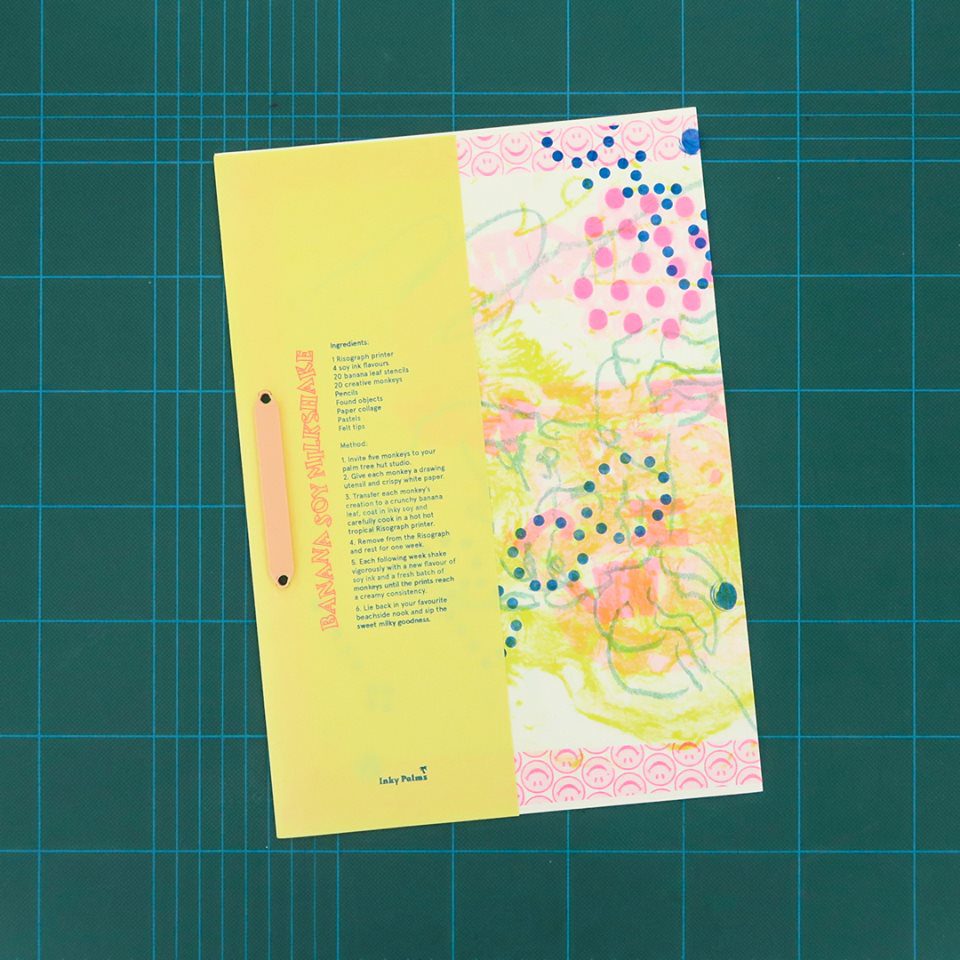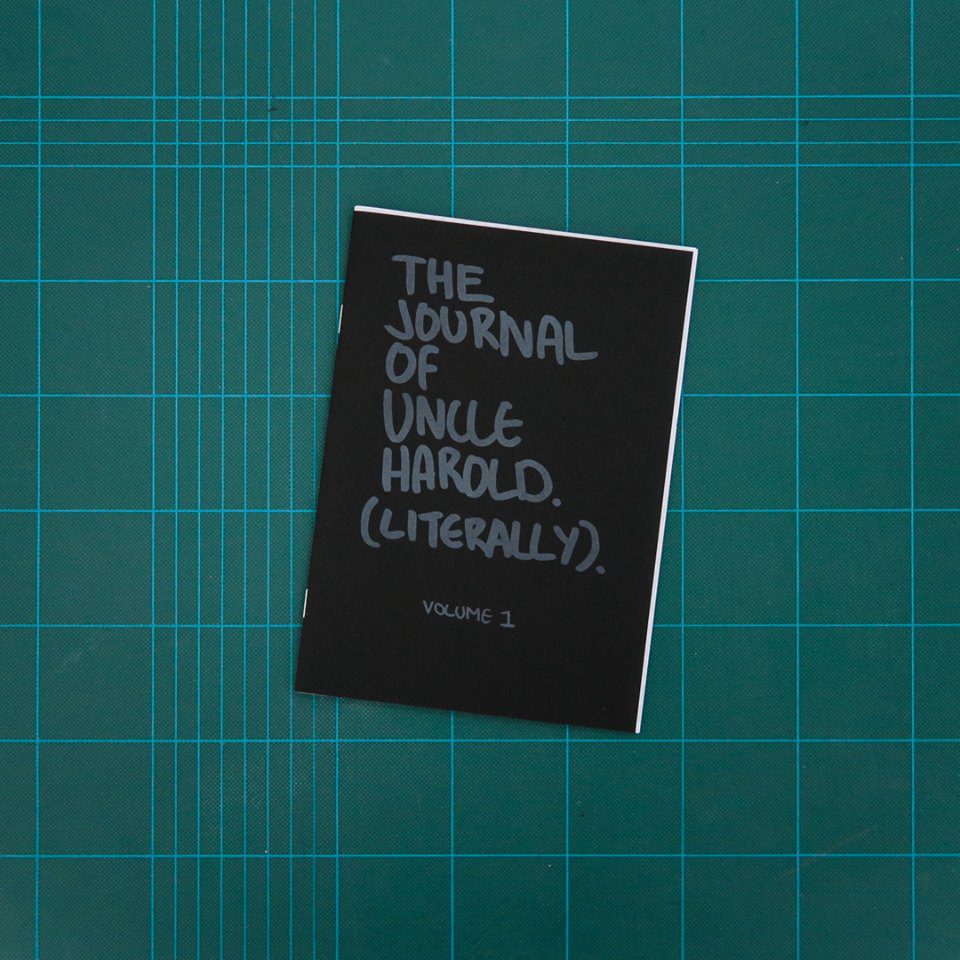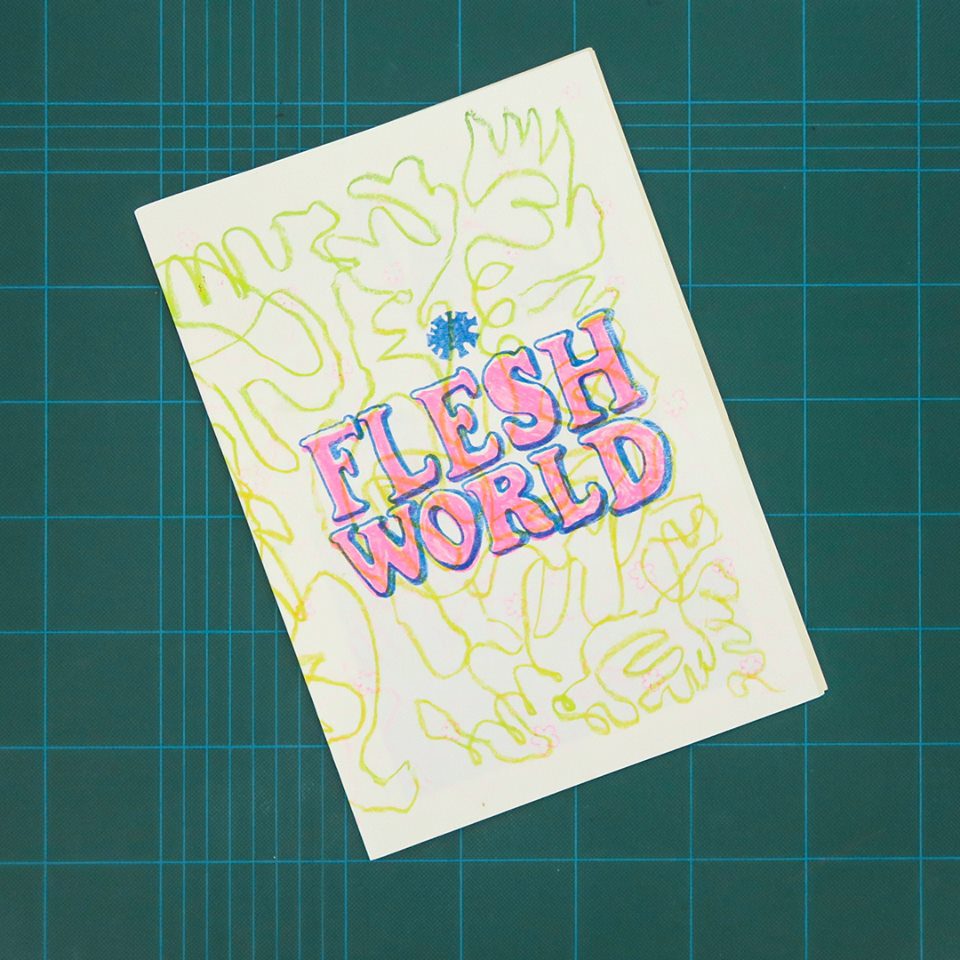Jumping straight back into the conversation with Christchurch Zinefest’s Alice Bush and Jane Maloney, we discuss digital and physical production methods, the presence of dissenting opinions and ideas in independent publishing, zine vending machines and the challenges of displaying the Zine Library…
We have touched on the fact that in the digital age we have this other channel to disseminate ideas, is there some convergence, between analogue methods of physically sending items, and the benefits of digital transmission? I mean you could create PDF versions that you could then transmute that people could produce and disseminate, are those tactics popular or acceptable?
Alice Bush: It’s different, like there are digital zines that people create, but I’ve always found it different, because a zine is an object, like that’s what makes it a zine, and in terms of putting PDFs up on the internet, it’s a bit different, but there’s always that thing where if you are wanting to spread your zine around the world then put it up on Instagram and people can find it…
Jane Maloney: Yeah, like a buy online option.
AB: There’s a bit of a community in Instagram and different sites where people will follow different zine makers and buy the zines, it’s like this little sub-community.
JM: Yeah, I’ve definitely bought people’s zines from following them on Instagram. Of all the social media platforms, Instagram is the one that people are attracted to for these object-based things because it’s visual-based. Of course, it’s still a business that is still trying to advertise to you and trying to control what you see.
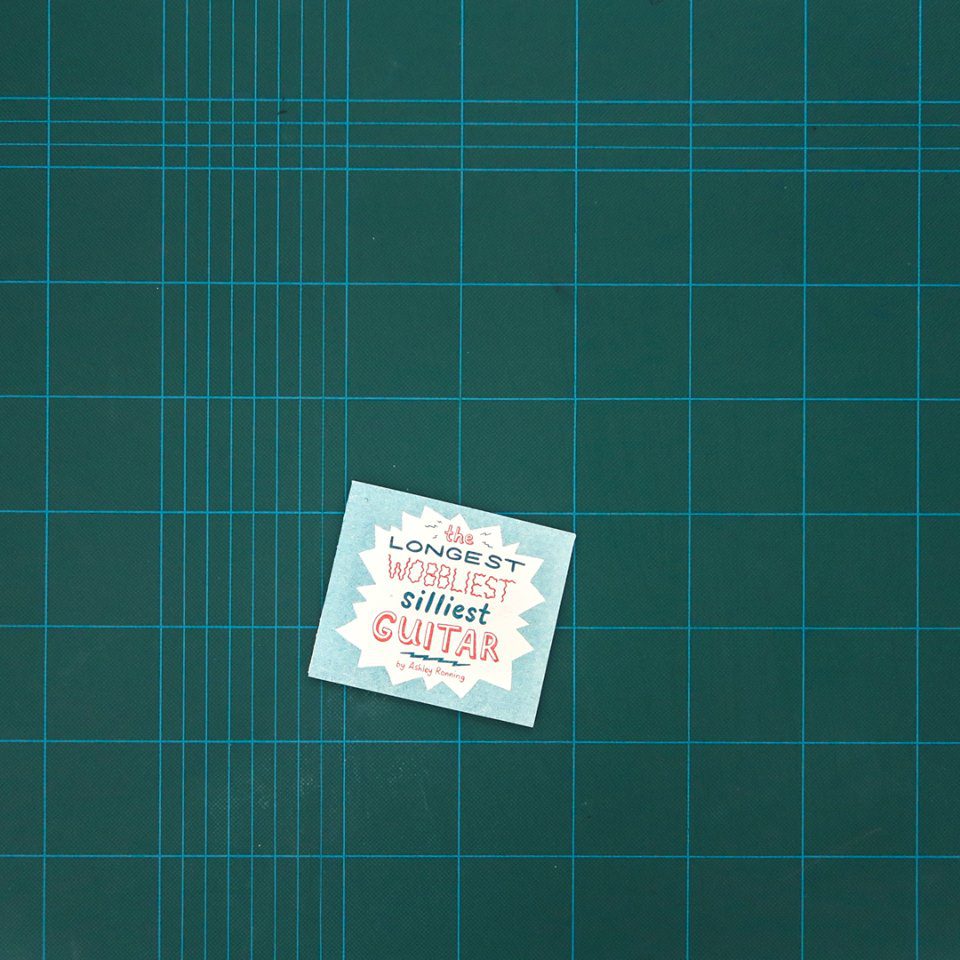
In their most pure form zines can combat that, so there’s almost an antipathy or weariness to that, using a platform that can act against the benefits of producing a zine as well…
JM: Yeah, it’s just a case of using it to your advantage without exploiting your work or any one else, or anyone else’s work… (laughs)
AB: I guess that’s part of the reason why zines haven’t disappeared as well, because those companies all own those sites, you can’t really be free, or use your free speech…
JM: Zines are like the ultimate form of uncensored media, maybe one of the only ones….
Recently there has been an example of a sort of Alt-Right street artist, making these interventions that are pro-Trump, which is kind of unexpected, but really it just shows the open potential of such tactics. Do you see that spectrum in terms of zine making as well?
JM: Alt-Right zines? I mean, I don’t specifically know of any off-hand because I don’t particularly choose to find them, but of course there are going to be various voices making zines. I watched a Vice documentary about a white supremacist group and that’s how they share information within their community, by making zines, or more like fliers, but that’s still a form of a zine, but, you know, that’s underground publishing, because how else would they spread their information?
Just the existence of that spectrum, that diversity, importantly creates a dynamic to respond to, everything is not contained in its own neatly defined bubble…
JM: Yeah, I mean it’s like everyone, you just hope that there is a greater number of zines produced for the good, wholesome reasons…
Well, they don’t have to be wholesome right? (laughs)
JM: No, but not dabbling in racism and homophobia, and all those things. You can’t stop anyone making a zine, just like you can’t stop anyone believing in something you don’t necessarily agree with. Heaps of people make educational zines, around like transphobia and why it is bad, homophobia and why it’s bad, and they are important because a lot of people just don’t know, when you have a privileged background in terms of education, you don’t realise how little some people know about things, they only know what they knew growing up. So, creating the counter to that in a zine is a good way to create a discussion.
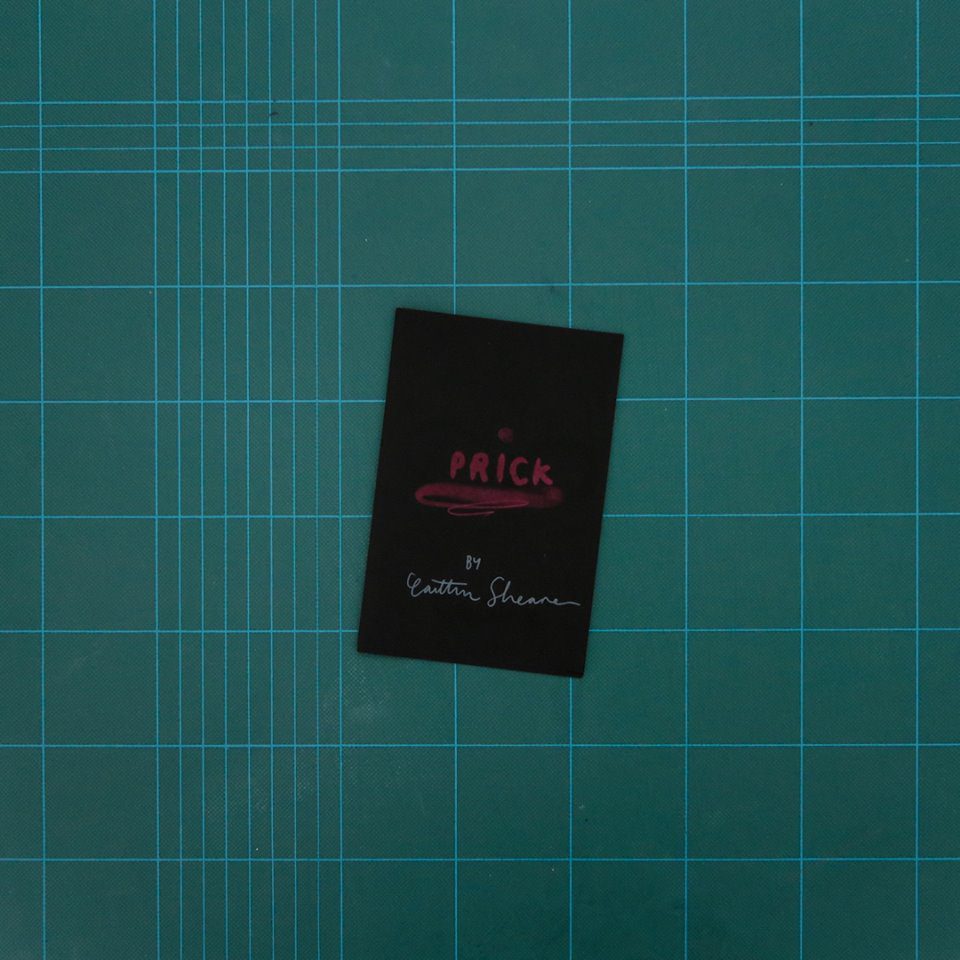
It comes back to dissemination and how the information gets out, which brings us back to Zinefest and what the goals are for the event. Obviously, it allows zine makers to come together, but it also allows people to find other channels of information and objects of interest, so what events are going on for Zinefest 2018 to engage that wider audience?
AB: We’ve got a few workshops, which is something that we are trying to do a lot more, to reach people…
JM: We have to start from somewhere and making workshops are more accessible and suitable for the resources we have, obviously we would love to have more writing workshops and content-based stuff in the future.
AB: But at the moment we mostly have visual artists who are great, and the workshops we are having this year are coming from that. We’ve got a printmaking workshop, a collage workshop and Jane’s Riso(graph) workshop. In the past we have done poetry workshops and different things like that, but you know, it’s important to get people in and making, and I think when people think of visual objects, especially when you have something like ‘magazine’ attached to it, people think they can’t do it because that’s not something that people usually do just by themselves, usually. It’s seen as inaccessible. But I feel like it’s just getting people in and getting them to make something, so they realise it’s an object and they can actually do it.
That there are fewer rules than one might expect, there’s no word count…
AB: There’s no word count, there’s no number of pages you have to have…
JM: There can be literally one bit of paper folded up and that can be a zine.
With regards to public engagement, and this often comes up when I’m talking about urban art, how you talk about the important transgressive element of rebellious practices? We’ve talked about how zines don’t have the need to break laws to exist, but there is still an important acknowledgment of their subversive potential, so is that something you build in to the workshops, or is that a little bit difficult when you are working with institutions like the Christchurch Art Gallery?
AB: It’s hard to tell people what to make things about, and I feel like if someone’s going to make something that does talk about serious issues, about activism, that kind of thing, they will do it, because if they are thinking about it already, they will do it. It is hard to get people to realise that’s what this vehicle could be though…
JM: I do get trapped, especially with my printing method and it being purely aesthetic, people just working with collage images or just figuring out the printing method, so we try to make it more about zines and about the content in a way that these are just ways you can produce it.
So, how do you inform people about actually getting their work out, how they make a zine the social object? How do you encourage them in that respect?
JM: We made a zine about zines, which includes that sort of information that we can give away now which is really good…
AB: I feel like people see Zinefest and go this is something that I can do, like we have open stand holder applications every year, we try to keep it free. We put it on our Facebook page and make sure it’s accessible and out there to as many people as we possibly can. It’s advertising that these workshops can be a first step to being introduced to the zine world, the zine community and people already making zines in Christchurch.
JM: They might have a burning opinion on something and by going to the Zinefest market they will see that people are making things about their opinions or about personal standpoints on different issues, and then they realise that it is ok. I feel like sharing your own opinion is really frowned upon a lot of the time, which is stupid…
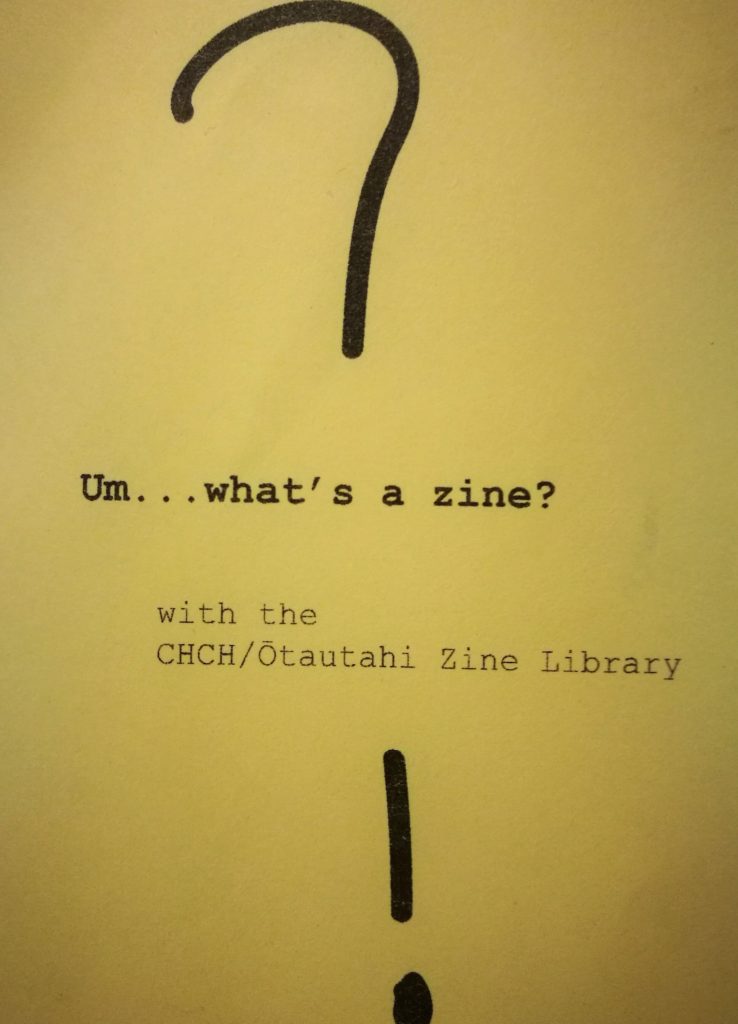
Well, in this digital era, people are so opinionated and empowered by the anonymous platform and will shoot down dissenting voices so quickly. But you can still believe in something and not have that aggressive, opinionated approach…
JM: Yeah, the internet warrior thing has changed the whole idea of free speech and discussion, but I think people who make zines are legitimately interested in what they are making them about, you can’t just feign interest…
The other great thing with a zine is that you can make your argument, you can present your opinion and idea, but it isn’t in a way that says: ‘Hey, your comment sucks!’ It is encapsulated in its own form, rather than in response…
JM: It’s not just a snap decision or opinion.
AB: It’s to do with the care you actually put into the object. It takes time to make it, so you want your thoughts to be succinct and you want what you are writing down to be…
JM: Well-informed.
AB: Yeah, well-informed, because of the care that’s put into the object.
JM: It’s not bang, bang, bang on the keyboard and you are done.
This is a typical interview question, but outside of your own work, which local zines are notable or interesting?
JM: I think it is always worth trying to find ones that University groups still make, like the FemSoc zine, because that’s always been part of the culture of the University and it should continue to be part of that culture. University is changing so much, it costs so much more to go to University now, and it’s not as academic anymore. Engineering and stuff, they were trades and Science was from a research point of view. With all these changes, it is important to support these groups that make these things that engage in independent critical discourses.
AB: In a broader New Zealand sense, Bryce Galloway produces the longest running zine in New Zealand, called Incredibly Hot Sex with Hideous People.
JM: It’s a personal zine, it’s specifically about his life, or just small parts of it.
AB: And it’s a great introduction to zine culture in New Zealand, because it’s been running for so long and you can literally find it anywhere, it’s in a lot of places…
JM: He’s really nailed down his distribution channels.
AB: And then there’s a zine maker who travels around and makes zines out of old book covers and stuff and it is sort of a more poetry and literature-based zine. There’s lots of different things happening.
JM: We also run the Christchurch Zine Library, and that is a good resource if people want to see more zines.
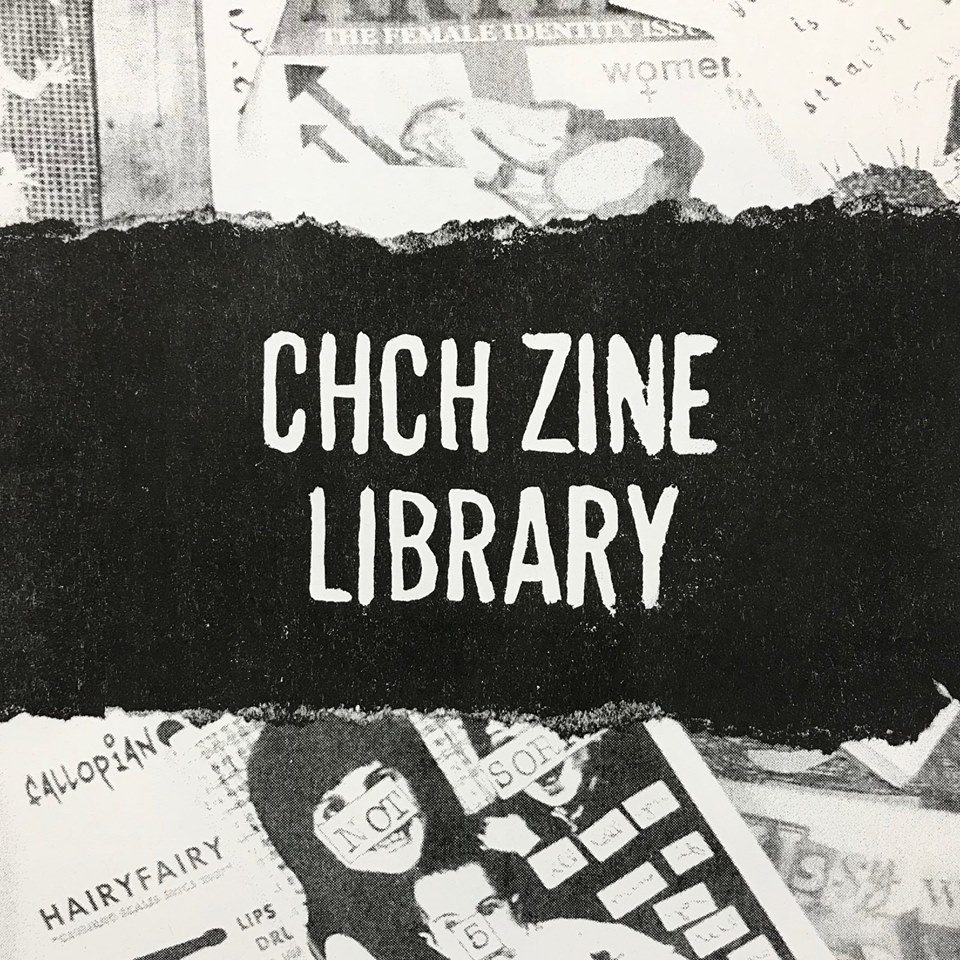
How is the Zine Library built as a collection? Is it trying to document the history of the culture?
JM: At the moment, it’s just from personal collections of both Alice and I, so they do cover quite different areas. There are also ones that have been sent to us. I’m part of different publishing and printing groups on Facebook and online, so I get sent quite a few things that people have just made themselves. Those ones are generally aesthetically focussed, because they might be exploring a printing option or production method. But yeah, we’ve got quite a range.
Will it be part of the Christchurch Library when it re-opens?
AB: No. The thing about the Christchurch Library is they have their own collection, that, I think, they are going to put on show when the library re-opens, although I’m not totally sure about that yet, so whenever someone says they are a librarian I ask: ‘Are you going to put the zine library in?’
JM: we talked to someone at the Word Festival, it was obviously an idea to join it all together, but I don’t know…
So, how do you display the library currently?
JM: So, it was recently at CoCA, in the Lux Espresso gallery space, which was really just to get it out to a wider audience. There was no specific reason to choose CoCA or anything, it was just an opportunity. We would probably prefer it to be further away from institutions.
AB: Because as soon as you get it into an institution, they try and say: ‘no you can’t put this in or that in…’
JM: We’ve never really thought about a permanent public display, it’s more something we bring out for events or when we are invited to places. It would be nice to have it publicly accessible, but we haven’t really thought about the work that goes in to that yet.
AB: It is hard to find space.
JM: And supervision, because while you want people picking them up and reading them, we don’t want them to literally be picked up and walked off!
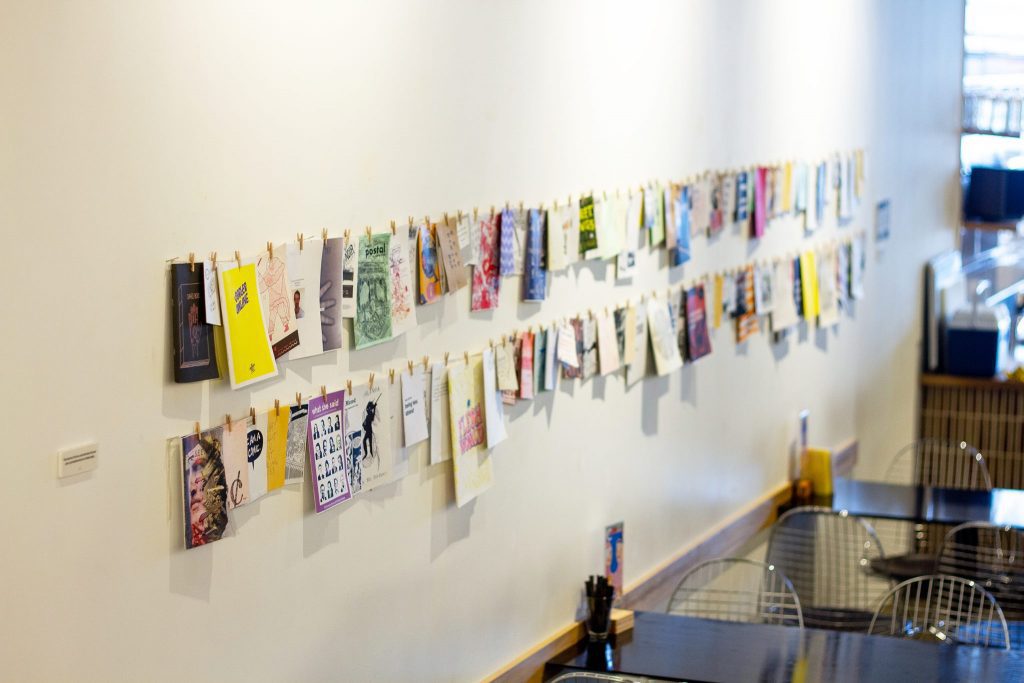
It would be cool to have a zine version of a book fridge, not so much for the Library, but for people to drop off and take away zines, a sort of distribution fridge!
JM: It would be great to have something, there is a zine vending machine in Auckland…
AB: Yeah, that’s so cool, it’s in the Auckland Library, I think.
JM: It’s not run by the Library, it got funding. But as long as your zine fits under a certain size, you can send multiples to put in, although because of the funding, the organiser is working just with local Auckland artists and zine makers.
AB: There is one in Toronto, which has been running for a few years, they are just so cool!
JM: It would be cool to have something like that connected with the Zine Library, where people can just take copies. We made the zine about zines so that people could just take that.
AB: It would be nice if the Zine Library was more accessible for people to come and take things…
JM: …and drop things off as well.
AB: Zinefest only happens once a year and that’s the main event for zines in Christchurch, so it would be nice to have something ongoing.
JM: Zines being a relatively organic object, the Zine Library doesn’t have to be super structured, and if things go missing out of the Zine Library, it’s not the end of the world. I document them all, I take photos of everything we end up with. In CoCA, people were taking in and clipping their own ones into the display, and that’s cool too…
That is awesome, that must be a desirable outcome, right?
JM: Yeah, it’s for other people, it’s not for us.
AB: I just don’t want the whole thing to disappear!
JM: We don’t want people to raid it! Because that’s how things collapse obviously. More stuff going on throughout the year, on top of Zinefest, would be cool, because the thing about Christchurch is that events and organised things don’t seem to last.
AB: People forget about stuff very easily.
JM: People just assume everything is temporary, everyone assumes something new is temporary because of a placement issue or something like that, so everything takes a while to solidify.
It takes a real commitment to keep doing it. So, I think I asked this question at the start of this conversation and we went off on another direction (laughs), but what specific events are taking place in Zinefest 2018?
JM: We have a few workshops in the build up to the market, I ran a zine making workshop with risograph printing at the Christchurch Art Gallery…
AB: We also had a workshop at The Corner Store, where people could make little woodblock plates to use for a zine cover or in a zine. And then on the 25th of September, we have a cut paper workshop with Sarah Lund, in the Pūmanawa space at the Arts Centre, which is also where the Zinefest Market is happening on the 30th of September, which is like the final hurrah of the fest.
JM: We are going to have the Zine Library on display at Fiksate Gallery, at 165 Gloucester Street, from the 19th until the 29th of September. The best place to go for finding out when things are happening is on Facebook, that’s the only constant social media we use, which is @zinefestchristchurch. You can also find information on the Zine Library on Facebook, which is @chchzinelibrary.
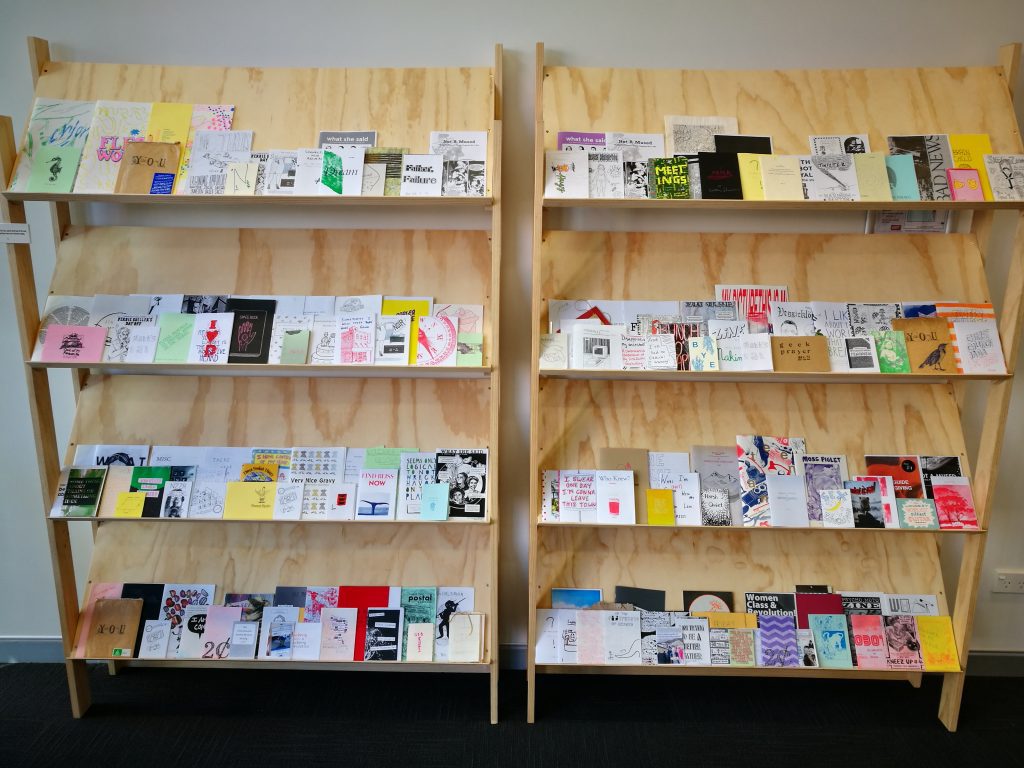
Follow Zinefest and the Christchurch/Ōtautahi Zine Library on Facebook to keep up with their activities, visit the Library at Fiksate Gallery (165 Gloucester Street) and get along to the Zinefest Market on the 30th September at the Pūmanawa Room in the Arts Centre, 10am – 4pm.
Feature Image credit: Bayley Corfield
Zine Library graphic credit: Jane Maloney/MK Press

